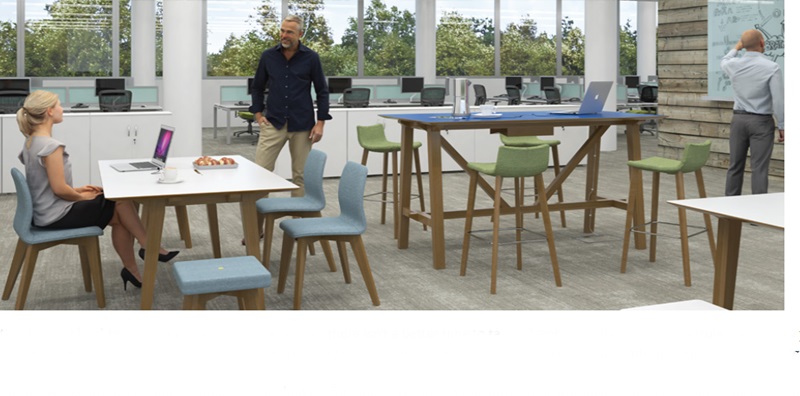As the days get brighter and longer, and our positivity grows, it is a great time to show employees some appreciation for all their hard work, by listening to employee sentiment and allowing it to inform your workplace design. What are today’s employees looking for, and how you can transform your workplace into an inclusive space in which employees feel valued. More and more, employee sentiment prioritises mental health above career aspirations. As a result, if workplaces are detrimental to an employee’s wellbeing, they will not stay for long!.
While each workforce is different, and steps should be taken to collect employee sentiment in your own teams, wider surveys have been conducted to find out what makes the general workplace population tick. According to recent surveys employees still value time in the office in this era of hybrid and remote work, with the majority noting that they rank socialisation, focus work, and in-person meetings highly in their reasons to physically go into work. Additionally, the general sentiment was that if a workspace meets their needs, they are willing to go into the office for an extra day per week in hybrid schedules.
Workplace diversity has its impact on workplace effectiveness and experience. It found the most positively impactful workplaces include spaces to rest and recharge, to work individually, and to collaborate creatively. The top three most valued spaces that employees considered ideal in a workplace were rest/nap spaces, a library space, and a ‘maker space’ The results of the surveys found that employees in high performing workplaces report that their office significantly positively affects their wellbeing, work/life balance, and overall job satisfaction; all of which contribute significantly to high productivity, high quality of work, and quick decision speed.
What is included in this modern office ?
Rest Nap Spaces
This space for relaxation is likely a remnant from lockdown, when many employees working from home on a full-time basis would use their breaks to have a quick power nap. Even if employees aren’t looking to get some shuteye, a peaceful space to collect themselves is still extremely valuable – especially to neurodivergent employees, who may become overwhelmed or anxious over the course of the day in the office. Providing comfortable, ergonomic soft seating, paired with acoustic solutions to control noise levels, is a simple but effective way to provide your employees with the space they need to take a breather. When combined with screens to add some privacy, you will have built the ideal nook for a well-deserved nap.
Library Spaces
Libraries are an excellent yet often under-appreciated resource in today’s culture, and their worth is growing. In the most basic terms this ‘third place’ is a place that is neither workplace nor home, that acts as a space where there are no work responsibilities and no house chores vying for your attention. In the workplace, a library space offers an area where small talk isn’t expected, useful resources such as books are readily available, and employees can get their heads down and get work done. Additionally, a sense of community and shared knowledge can be generated if employees are encouraged to bring in their own books to share with colleagues. The primary requirement for a library space, besides necessary shelving for books, are sturdy tables and comfortable, individual seating. Providing both long worktables and smaller coffee tables will allow employees to study and work either individually or collaboratively, depending on the task at hand.
Maker Spaces
You may be asking, “what is a maker space”? In general terms, a maker space is an area dedicated to the pursuit of experimentation and creativity, with resources such as space, equipment, and fellow makers on-hand to assist in exploration of skills and hobbies (whether these are work-related or not). People with common interests can gather in these spaces to work on projects, collaborate, and pursue their creative and technical interests. For employees who lack the resources at home or elsewhere, these spaces are an incredible asset to develop both skills and self-confidence. Even if your industry isn’t creative or technical, a maker space is still valuable for generating collaboration and communication between colleagues, and for employees to upskill and gain confidence that will resonate across the rest of their working lives, and beyond. Besides the tools and equipment you could provide for employees in such a space, like printers (paper and 3D), woodworking tools, and electronics, providing large, sturdy workbenches to accommodate for creative pursuits and collaboration is vital for a maker space.
You may note that the top three desired spaces by employees also match the conditions for spaces within a high-performing workplace; socialisation, focus work, and in-person collaboration. Take the time to find out what your workforce is looking for, and you will likely find that catering to their sentiments will not only improve staff retention, but productivity, effectiveness, and wellbeing.
